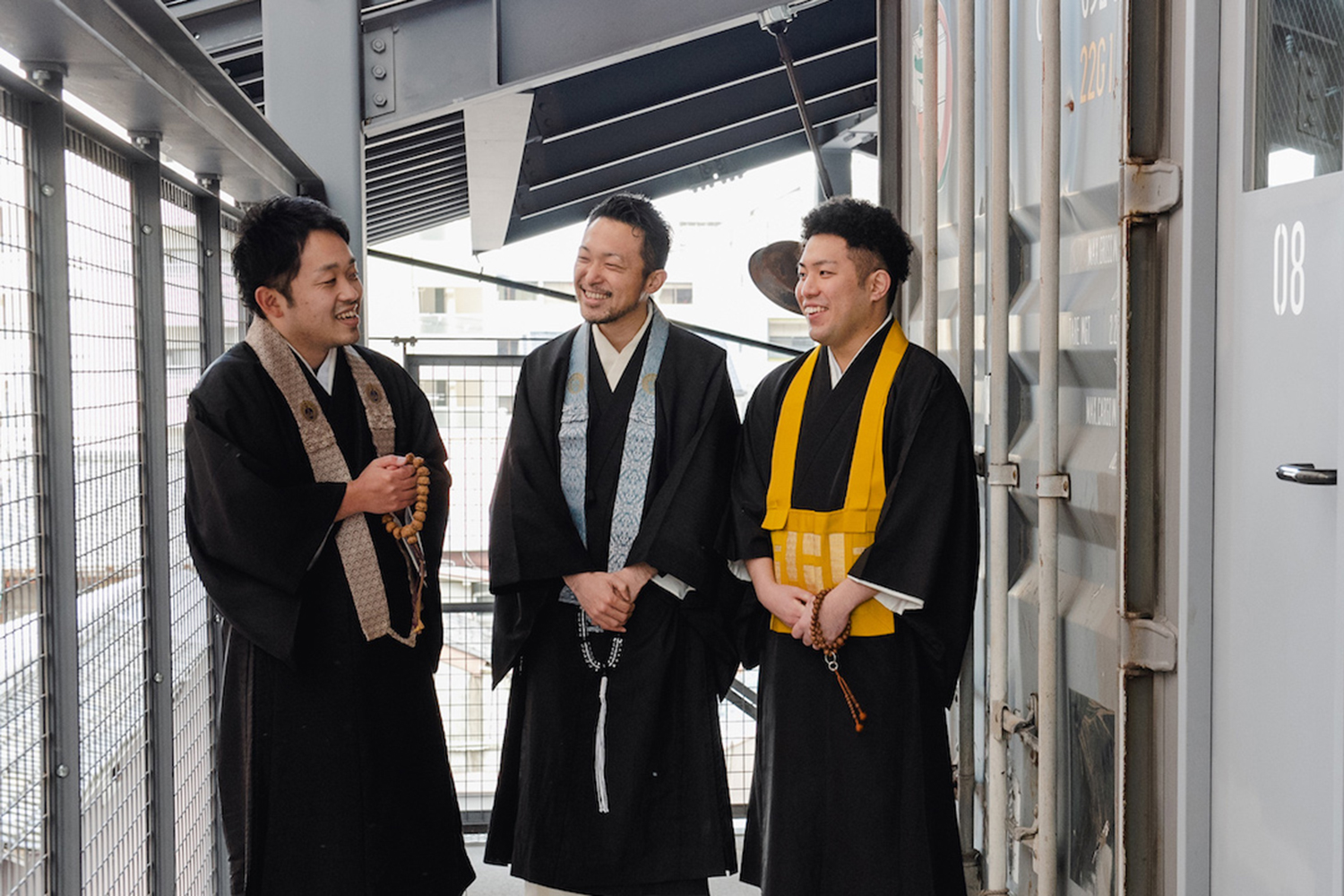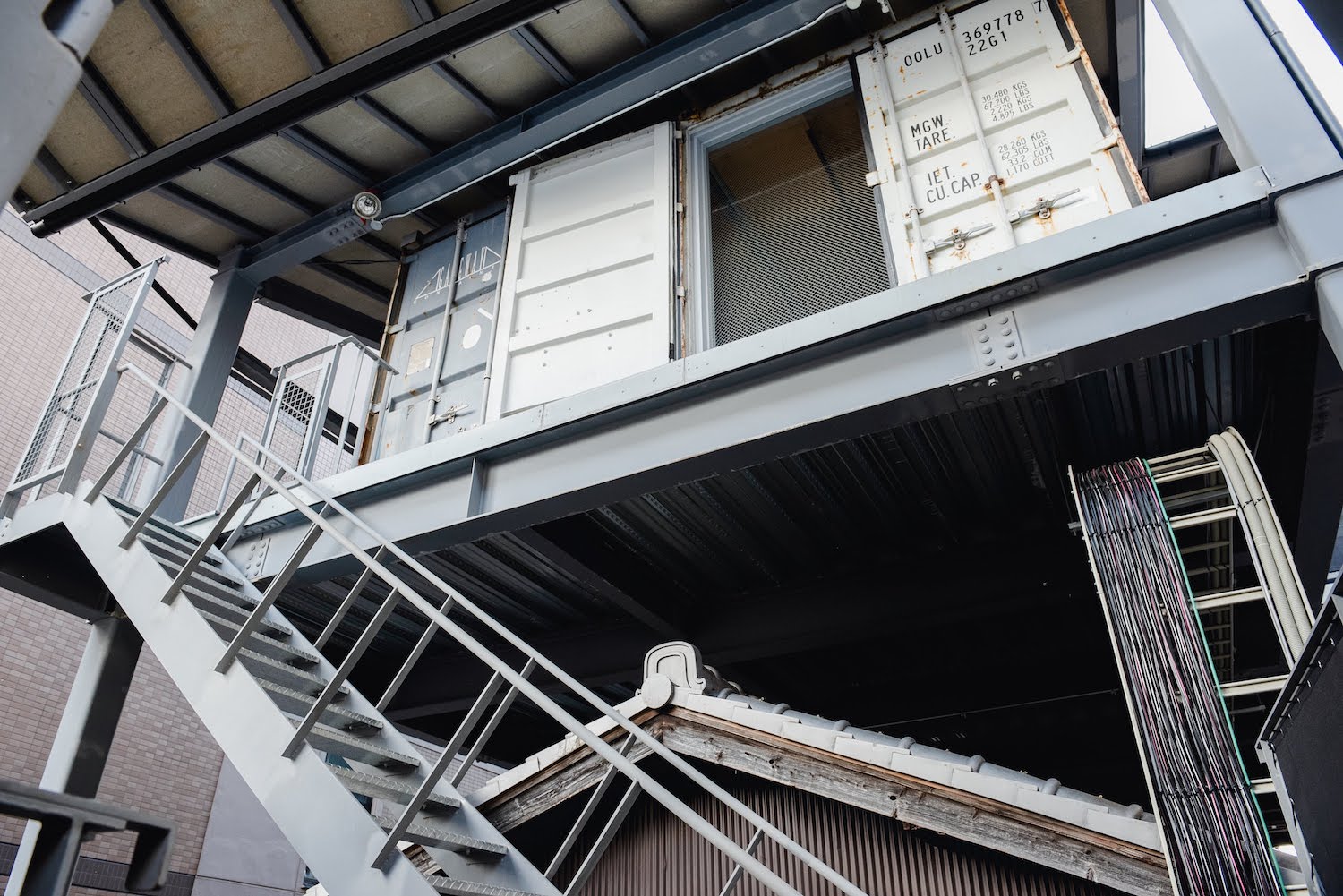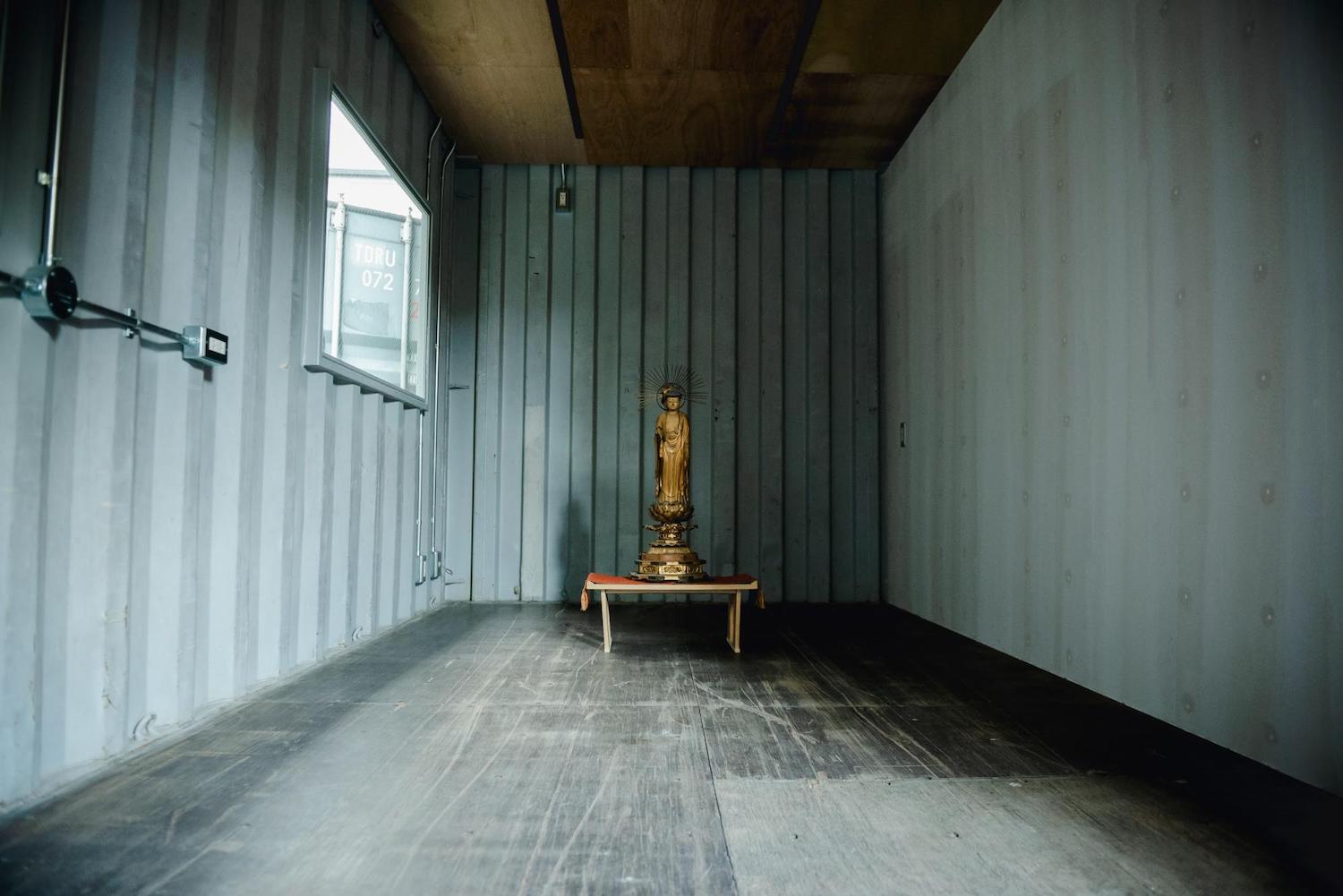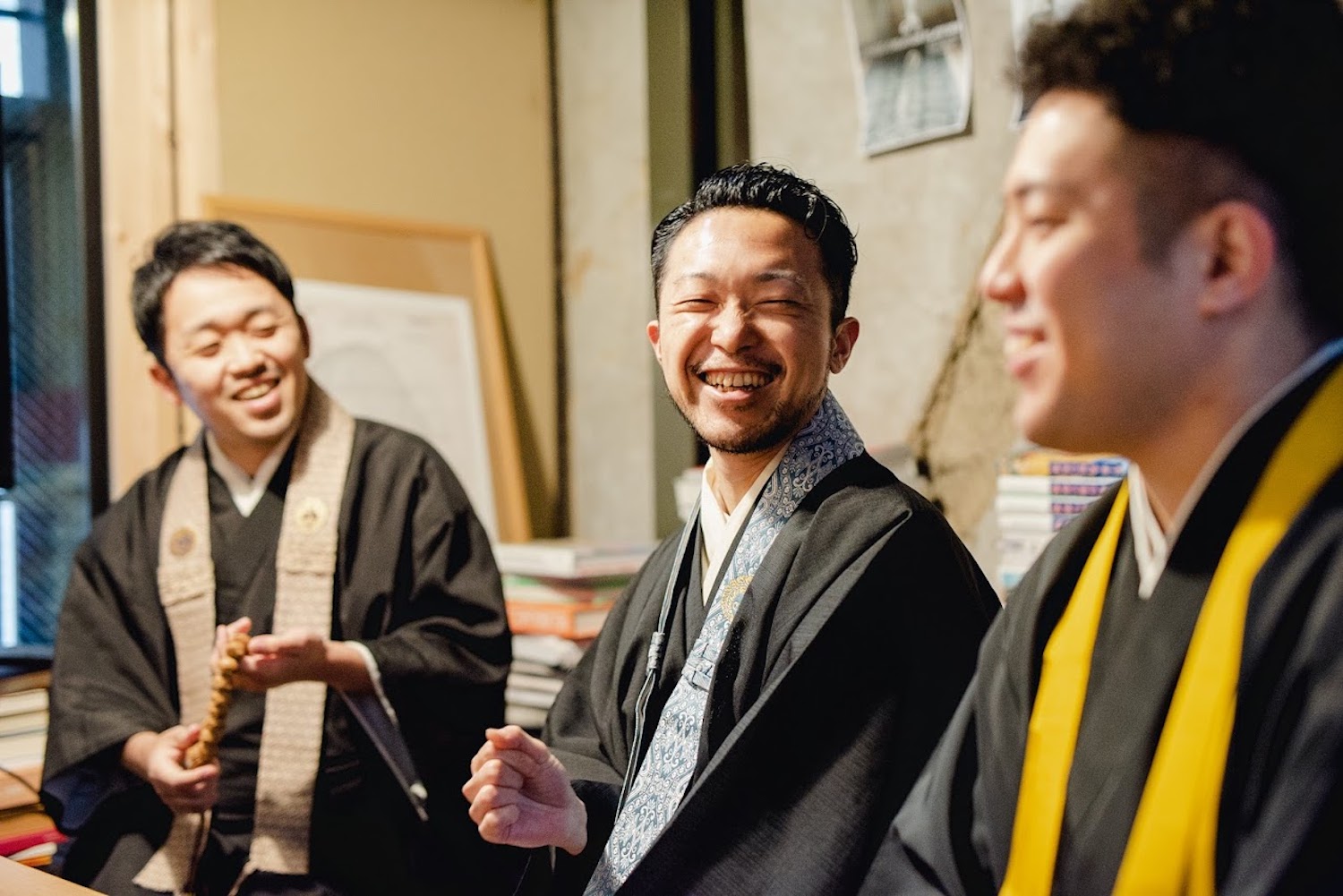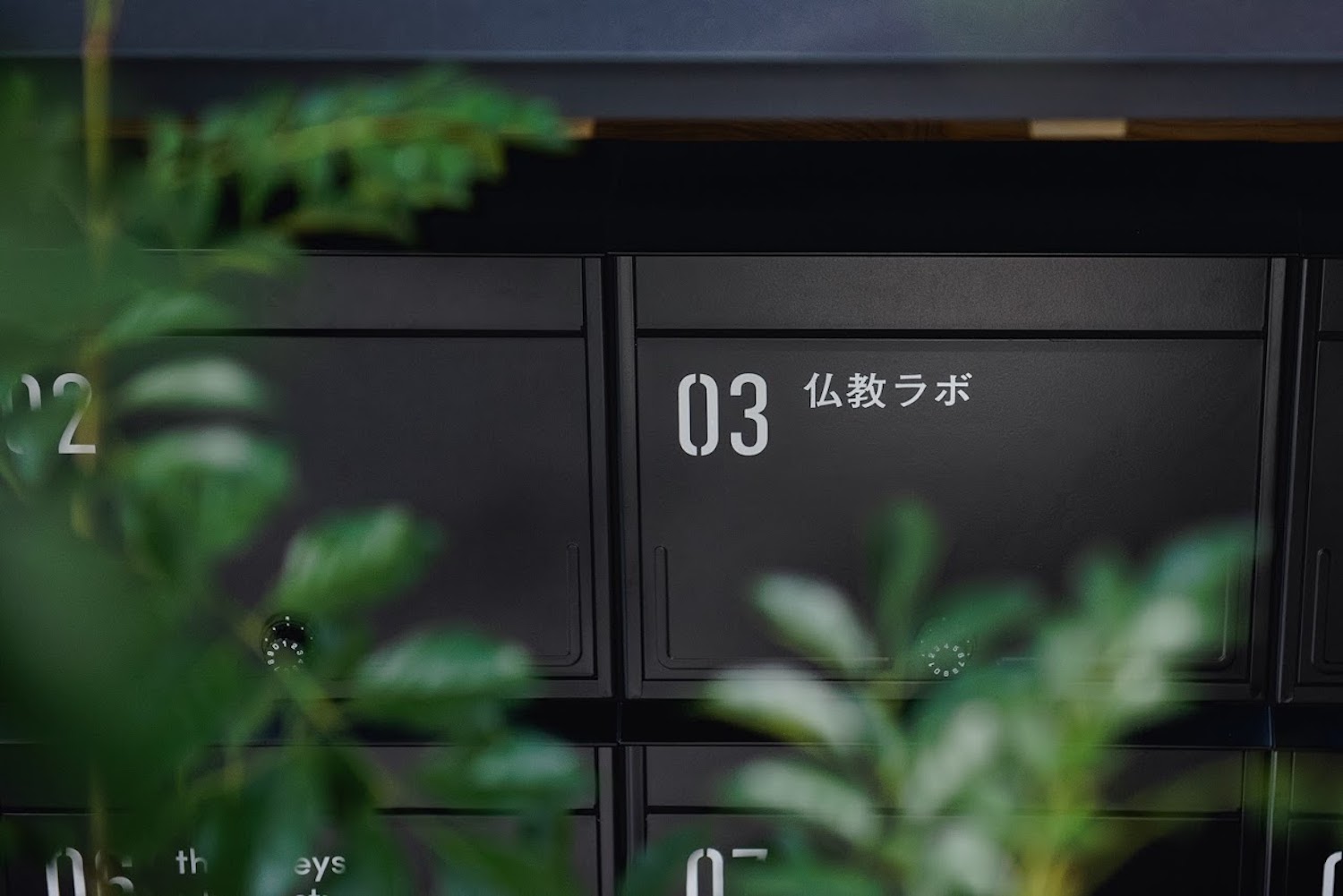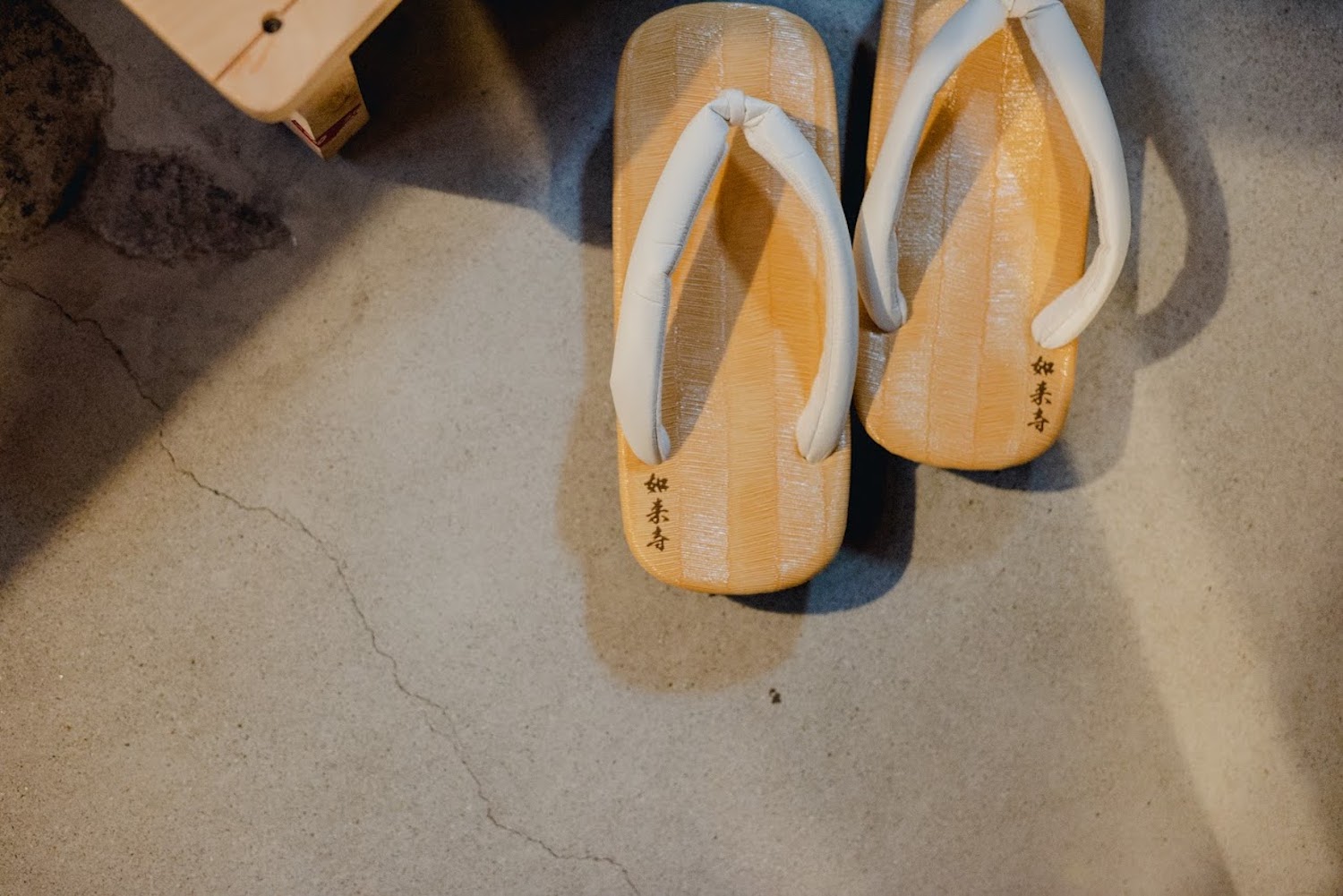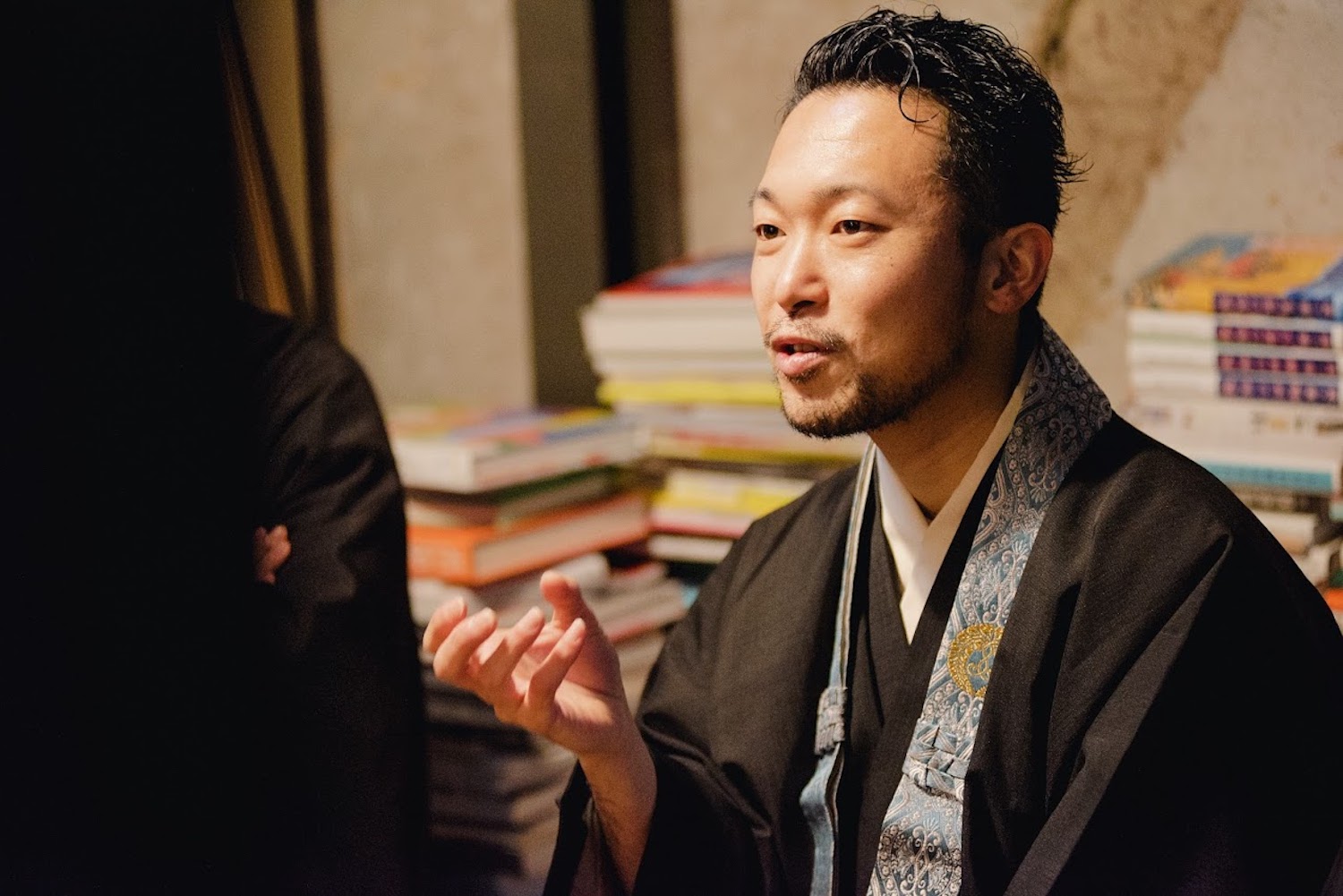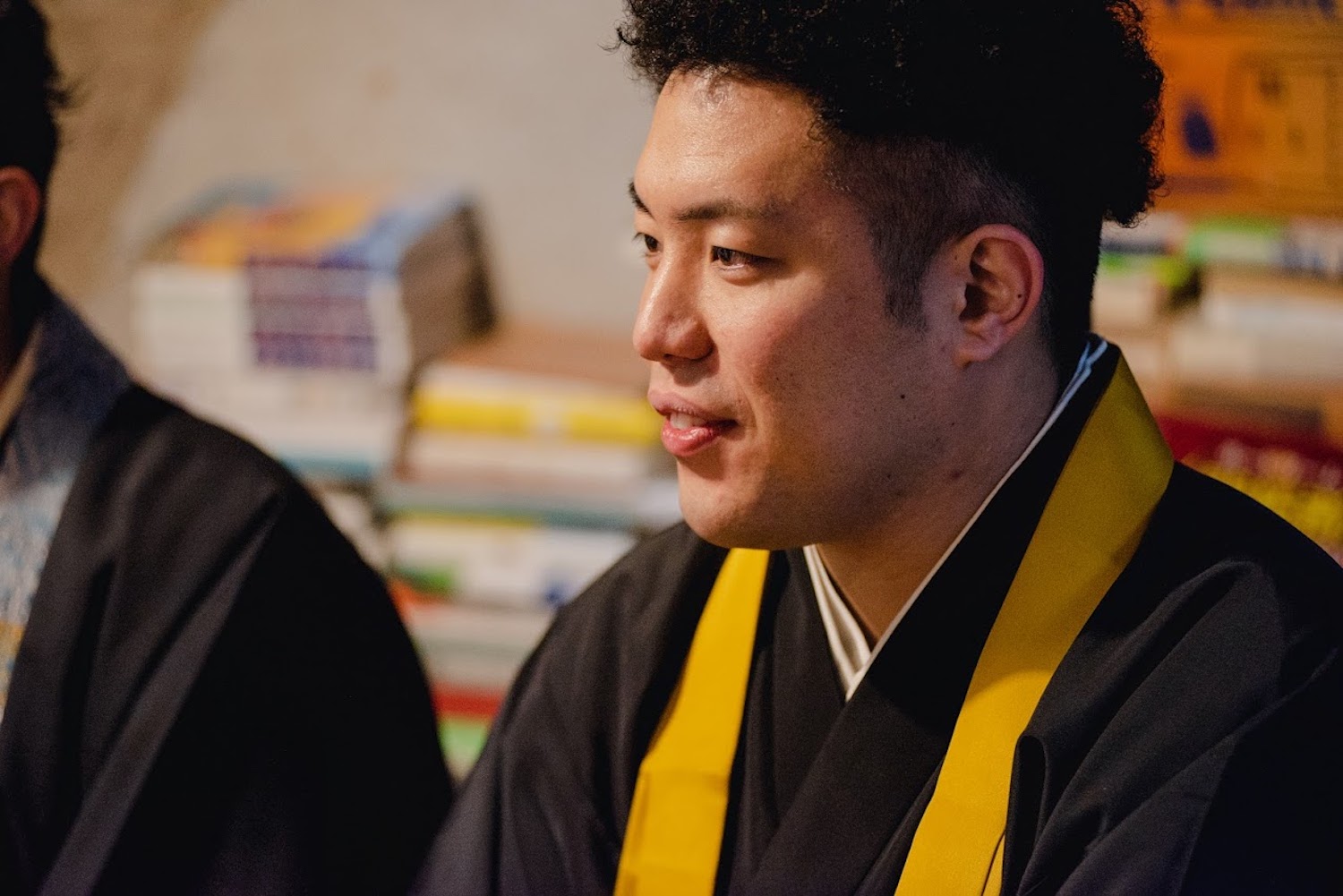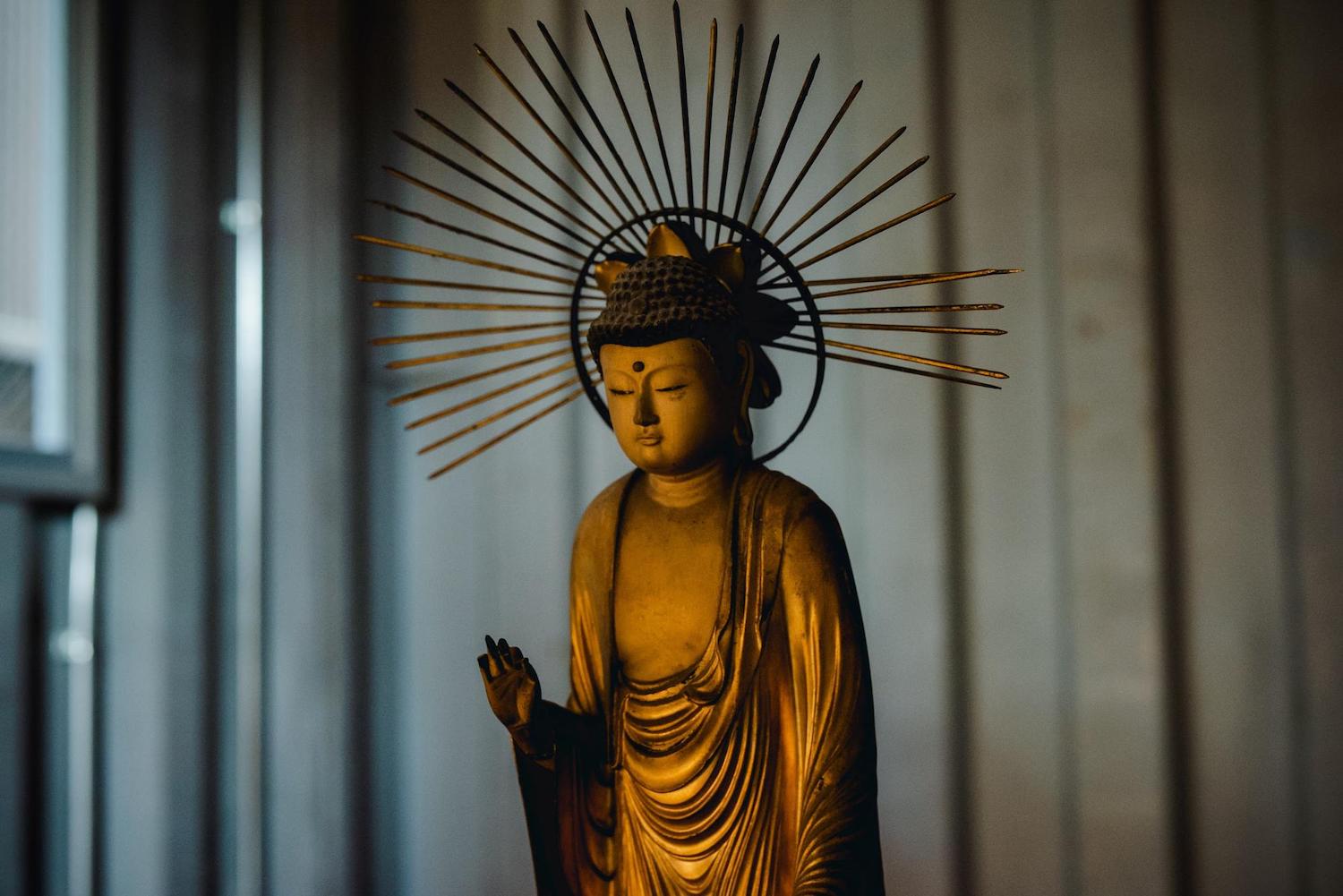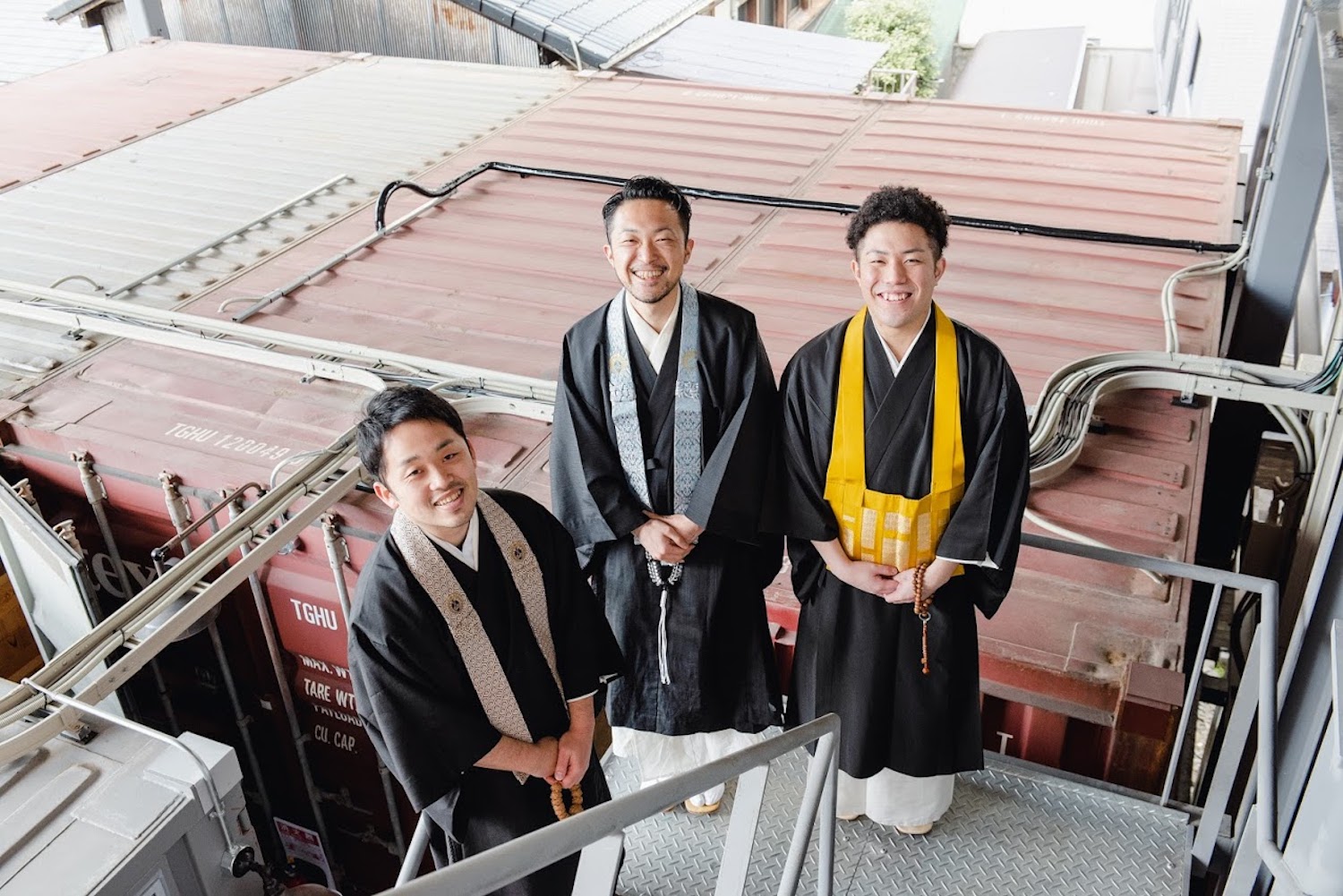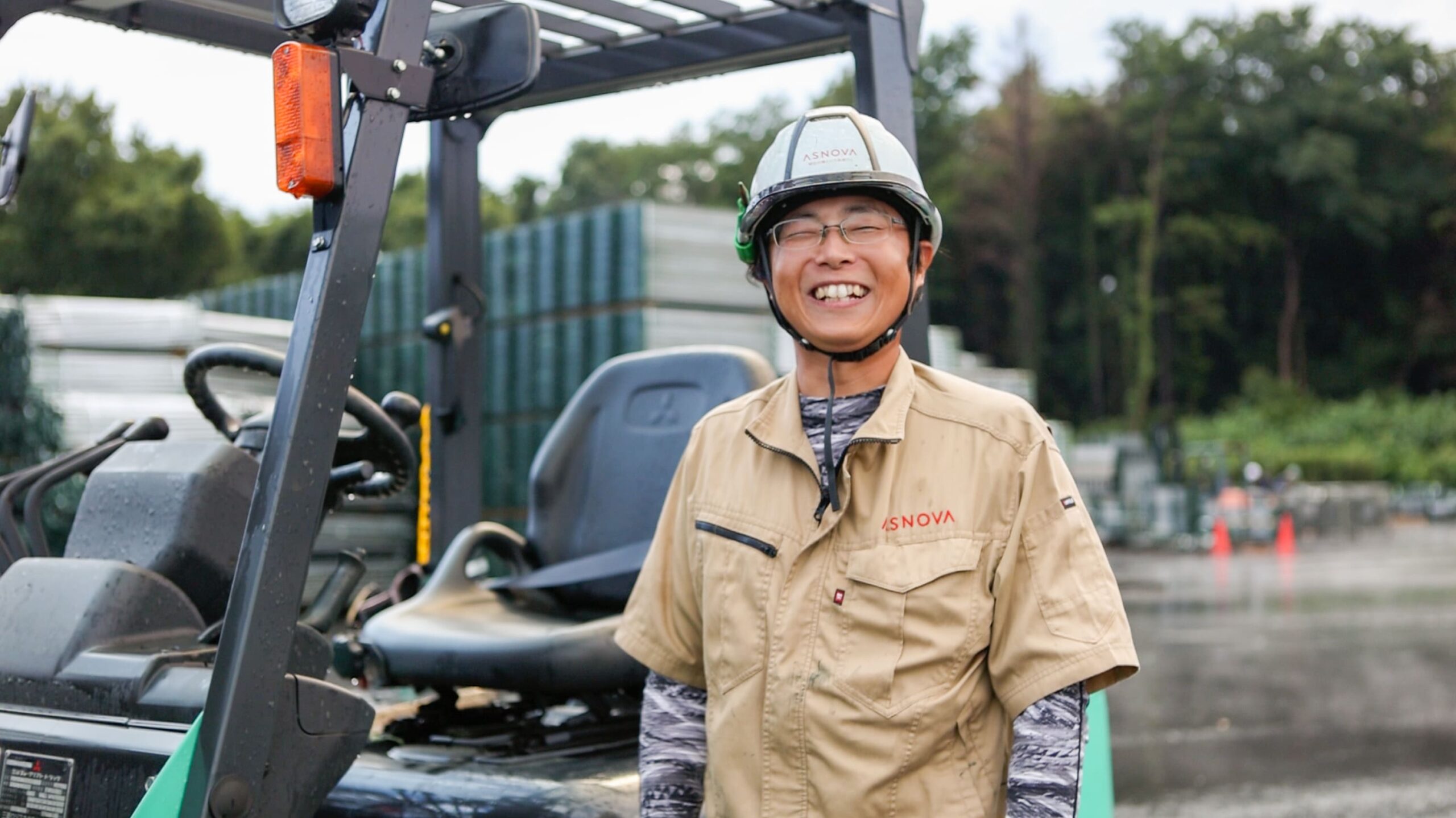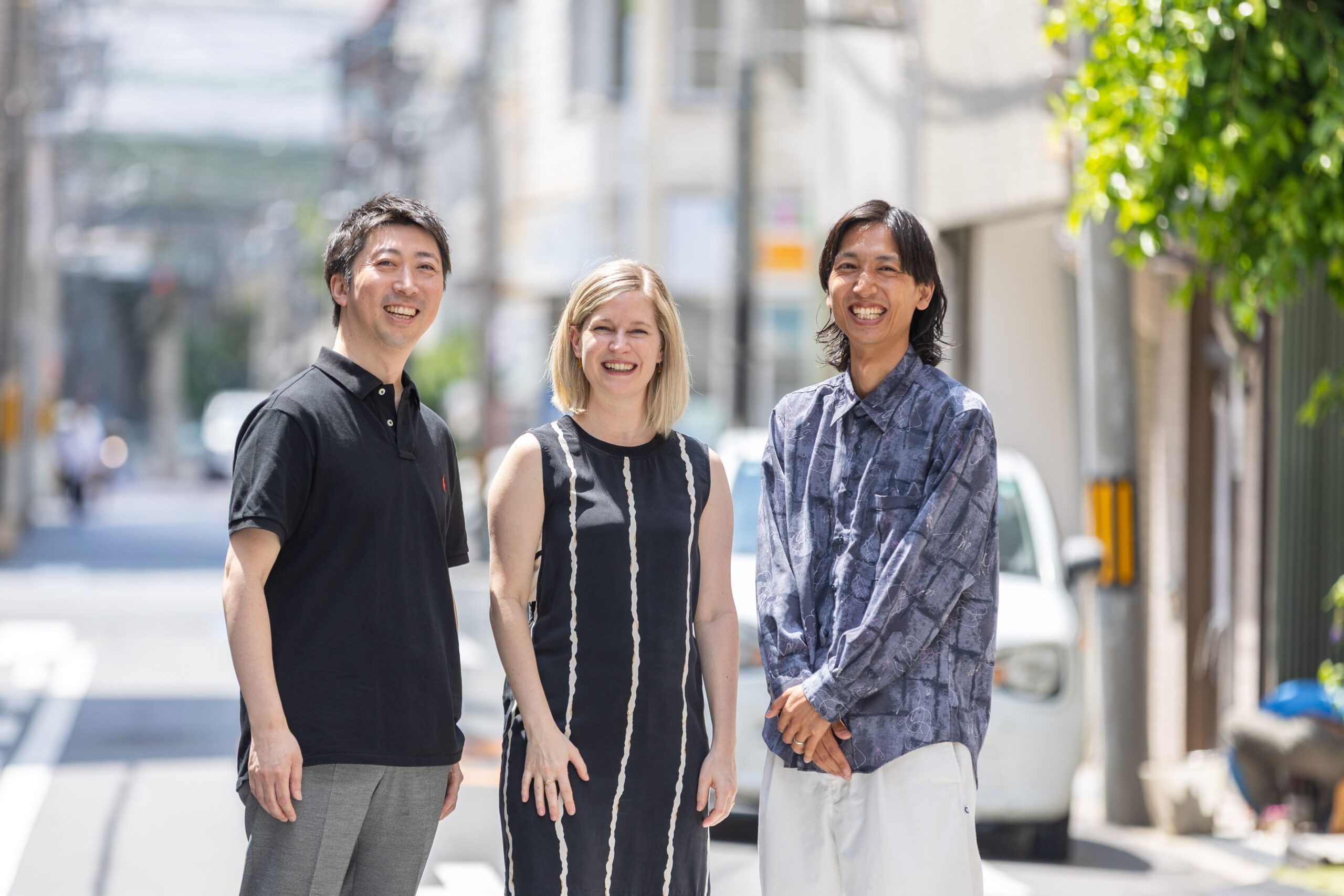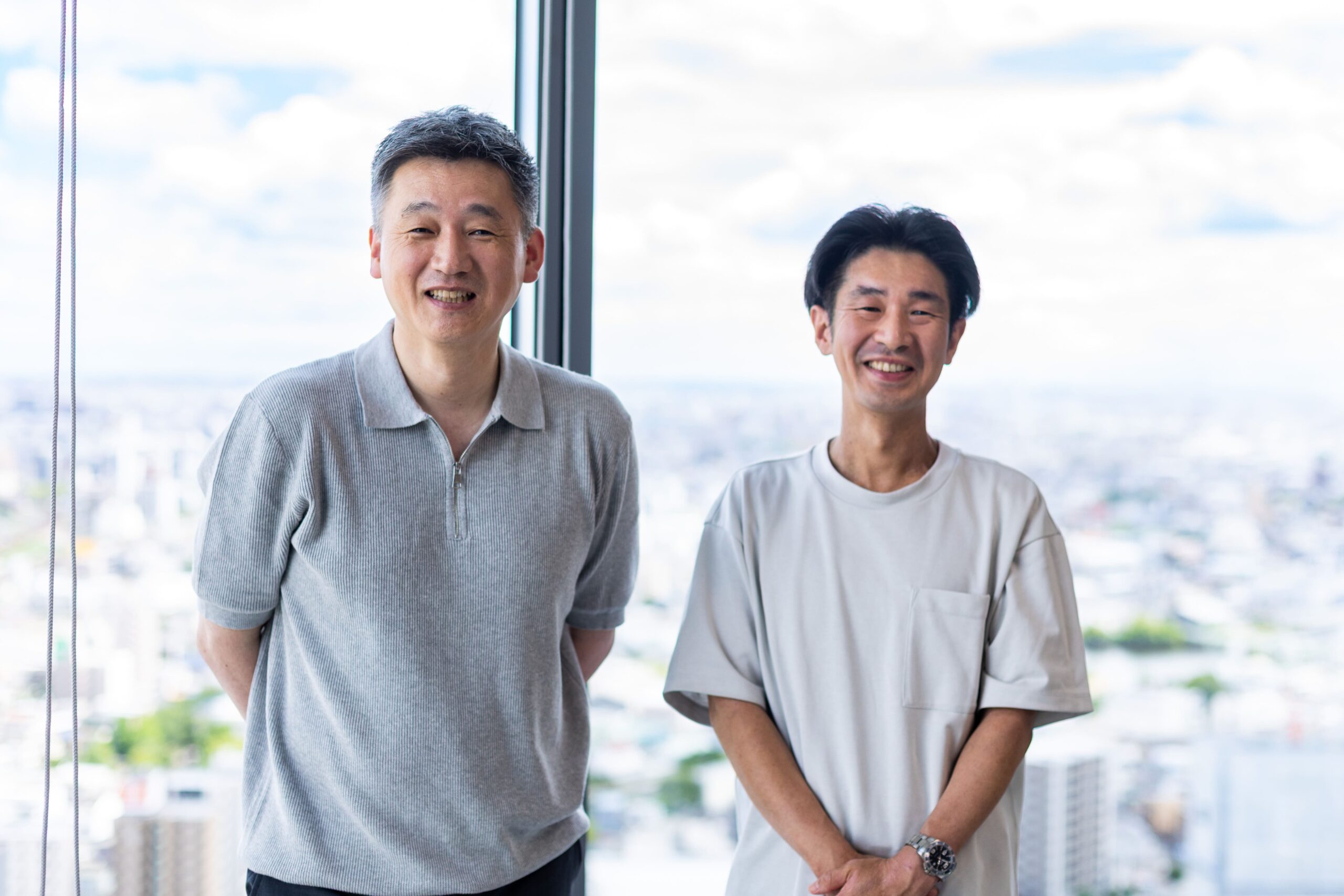もしも僕らが “ゼロ”からお寺をつくるなら
古い京町家を囲むように貨物輸送に使われるコンテナを連結した不思議な空間・
CONCON 。
若き僧侶3名が入居したのは、広さ約13.77㎡、家賃は月71,500円(共益費、税込)のコンテナです。「懇々山七万寺」の名前は、実は家賃の「七万円」からとられたものだそう。
杉本:まず、CONCONに“仮設のお寺”をつくることになった経緯から聞かせてください。
左から釈さん、霍野さん、稲田さん
霍野:CONCONに入居している
株式会社ぬえ の松倉早星さんとおつきあいがあり、CONCONができたときに見学させてもらったんです。
「かっこいいなぁ!僕らもこの場所で何かできないかな」と言ったら、早星さんが「一番身近で、一番小さなお寺をつくろうよ、CONCONで」って。個性的なクリエイターが集うこの場所に、僕らが僧侶としてジョインしたら、どんな化学反応が起きるのかを考えるとワクワクしましたね。
半年が過ぎて「どうやって家出を終わらせようかな」と悩んでいたときに、突然電話をもらったんです。家出では、「僧侶ってなんだろう?」を実験してたのですが、同時に「じゃあ、寺ってなんだろう? 」という問いも生まれていて。
「お寺をゼロからつくる実験やらない? 」と誘われて、「おお、それはやりたかったことだ!」と思いましたね。
杉本:何百年もの歴史を受け継ぐお寺は「ゼロ」の状態ではありえないし、地域に深く根を下ろした “常設感”も強いですよね。だからこそ、「お寺を仮設してゼロから考えてみる」 という実験がすごく面白いです。
釋:しかも、僕ら3人はみんな副住職で、ゆくゆくはお寺を継いで住職になる予定なんです。副住職は、住職になるまで自分なりに試行錯誤を許される立場でもあって。
今の僕ら自身にも“仮設感”があるかもしれませんね。
副住職は、住職になるまで自分なりに試行錯誤を許される立場でもあって。今の僕ら自身にも“仮設感”があるかもしれませんね。
釋
クリエイターと僧侶が コラボする「うってつけの場所」
日本のお寺の多くは、「檀家」という会員制度によって運営されています。こうしたお寺の住職は、代々続いてきたお寺という場と、そこに紐づく檀家コミュニティを受け継ぐことから、自分の時代をつくりはじめます。
つまりほとんどの住職は、「新しいお寺をゼロからつくる」というプロセスを経験できない のです。
釋 :お寺をゼロからつくるということは、自分たちで新しいコミュニティをつくることでもあります。すごくやってみたかったことだから楽しみですね。
まちのなかで展開していた仏教コンテンツを、一斉にここに持ってきたら何が起きるのか、どんなニーズがあるのかを体感したいです。それこそ実験の場ですね。
稲田:ところが、「ゼロからつくれる!」と喜んでいたのに、いざゼロになってみると何をしたらいいのかすごく悩むんですよね。結局、立ち返ったのはこの土地の物語だったんです。
杉本:CONCONがある、式阿弥町の物語ですか?
釋:町名の由来になっているのは、中世の「式阿弥道場」という時宗の道場。猿楽能の観阿弥や世阿弥などがよく知られていますが、時宗には「阿弥衆」という芸能民が集まっていました*。この土地には、時宗の僧侶と芸能民がコラボしていたという歴史的背景がある。CONCONは、僕ら僧侶がクリエイターとコラボするにはうってつけの場所だったんです。
*時宗は鎌倉中期に一遍が開いた浄土教の一宗派。「時衆」とも言い、芸能に優れた人が集まっていたことから、室町時代以降は将軍のそばで芸能にあたる人々は「阿弥衆」と呼ばれた。
CONCONのテーマでもある「共創」を、いろんなかたちでやってみたいですね。
ゼロでありながら、絶対にゼロにはならない っていうことも、やっぱり面白いですね。
僕らは縁起のなかにいて、独立したものとしては存在できないんだという、仏教の根本に立ち返ってしまうから。
僕らは縁起のなかにいて、独立したものとしては存在できないんだという、仏教の根本に立ち返ってしまう
稲田
人間を “性弱説”で考えてみる場に
現在はまだ、お顔のやさしい阿弥陀如来像(以下、阿弥陀さん)が安置されているだけなのですが、コンテナの内部にはふしぎと安らぎが漂っています。
ただ、阿弥陀さんがいるだけなのに、なんだかとてもお寺っぽい感じ。「でしょう? ここに阿弥陀さんを置いたときの感じがヤバかった んですよ」と霍野さんは興奮気味に話します。
霍野:ここのコンテナは廃棄されたもの、いわばゴミですよね。
一方で、お寺の御本尊は、作法にのっとって立派に荘厳され、須弥壇とよばれる壇上に安置するものです。「このスクラップ感のなかに阿弥陀さんを安置したらどうなるんだろう?」 と思っていたんですけど……。
「この良さを最大限表現するには?」と考えるなかで生まれたのが、「泥中の蓮」 というコンセプト。
仏教では、泥は煩悩、蓮花は悟りの象徴として語られます。コンテナのスクラップ感と阿弥陀さんの関係性を、「煩悩即菩提(煩悩も悟りの機縁となる)*」としてインスタレーションで表現 してみたいと考えています。
*菩提(さとり)とそれを妨げる煩悩(迷い)は両方とも人間の本性であり、煩悩があるからこそさとりを求める機縁になると考えられる。
釋:一度、廃棄された家電と阿弥陀さんを組み合わせてみたのですが、それはうまくいかなくて。
知り合いの建築家さんと話していたら「実際の泥のほうがいいんじゃない?」とアドバイスをされました。
今は、「全国を巡り、泥を集めるのはどうか?」 と話し合っています。
このスクラップ感のなかに阿弥陀さんを安置したらどうなるんだろう?
霍野
生きる指針になるもの
杉本:壮大なプロジェクトですね!最後に、「懇々山七万寺」プロジェクトを通して伝えたいことを聞かせてください。
稲田:今は、ひとつの価値観に揺れ動いてしまうことに苦しむ人が多いなと思っていて。
仏教をOS(Operating System)にして生きている僕ら僧侶を通して、自分自身の価値観を改めて考えてもらえるのではないか と思っています。
僕は、人間は”性弱説”だと思っていて、弱いからこそ一つの価値観に振り回されるし、弱いからこそ自分の生きる指針になるものが必要なんじゃないかな 。
僕たちは仏教を生きる指針にしているけど、「あのアニメのあのセリフが指針になった」という人もいると思う。
判断に迷ったときに立ち返ることができる、真なるもの”に出会う場 でありたいですね。
釋:自分の偏りに対して自覚的であろうというのも仏教の教えのひとつ。
仏教を軸に生きてもらいたいとは思いますが、まずは「自分自身が何を軸として生きているのかに目を向けてみましょう」 というメッセージを発信できたらと思っています。
杉本:ありがとうございました!「懇々山七万寺」の今後を楽しみにしています。
『POP UP SOCIETY』とは
『POP UP SOCIETY』は、一般の方に業界への興味を持ってもらい、中長期的に建設仮設業界の若手人材不足に貢献することを目指し、ASNOVAが2020年3月から2022年3月まで運営してきた不定期発行のマガジンです。
仮設(カセツ)という切り口で、国内外のユニークで実験的な取組みを、人物・企業へのインタビュー、体験レポートなどを通じて紹介します。









